John Hurrell – 11 November, 2016
In the gallery blurb Calder links her installation with the early (1789) colour wheel of Goethe, designed when he was disputing ideas about the properties of light passing through prisms as put forward by Newton. However the additive qualities of light are very different from the subtractive properties of paint, and putting the two together (Goethe's theory and her practice) is an uncomfortable conceptual layering.
A presentation which reaches upwards into the central convergence of eight white beams within the gallery’s high domed ceiling, Calder’s suspended silicone ropes and ten furled rubbery paint ‘skins’ - like say the works of Rohan Wealleans or Glenn Burrell - make a painting (physically as substance) that is also an installation or sculpture.
In a small annex to one side we see three other glossy skins, folded like stacked blankets and perched on tottery spider-legged stools. Instead of dropping down from above they are held up from the floor, compressed horizontal forms this time - not vertically extended peelings.
Glancing across the large central room, the installation is like a walk-through painting, a blend of Robert Motherwell with Morris Louis, exploiting cascading swathes of tumbling black lines and curling coloured leaves or tightly spiralling pods. The nearby longlegged high stools, with their luminous (folded, rumpled or twisted) bundles, convey expectancy: a latent and potential morphology about to be opened up, spread and made manifest.
In the gallery blurb Calder links her installation with the early (1789) colour wheel of Goethe, designed when he was disputing ideas about the properties of light passing through prisms as put forward by Newton. However the additive qualities of light are very different from the subtractive properties of paint or printing, and putting the two together (Goethe’s theory and Calder’s practice) is an uncomfortable conceptual layering. Even though he believed that careful observation took precedence over mathematical calculation, Goethe was not studying paint where some wavelengths are absorbed and not reflected (while others remain and are perceived), but mixtures of light that converged and then with a prism were resplit, intellectually mixed with an attendant belief in the four humours. Calder’s titles appear to reflect this.
The folded sheets on stalks have a very different character. The long wonky diagonals beneath them, as converging vectors, provide a reluctant stability while the same black steel rods reflect the hanging ropes up high in the other space, and the draped folded ‘hides’, permutations of the curling solidified planes of (no longer oozing) shiny latex.
John Hurrell
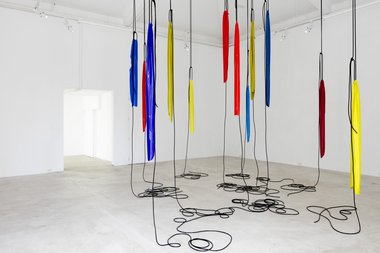



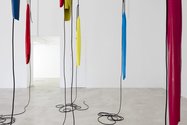
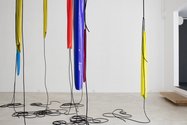
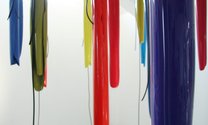

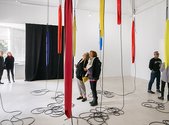
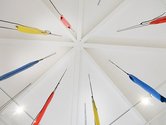
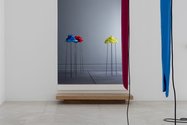
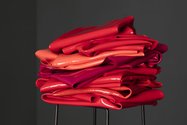
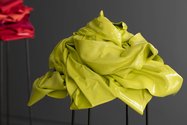
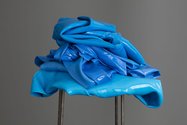
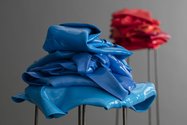
 Advertising in this column
Advertising in this column Two Rooms presents a program of residencies and projects
Two Rooms presents a program of residencies and projects



This Discussion has 0 comments.
Comment
Participate
Register to Participate.
Sign in
Sign in to an existing account.